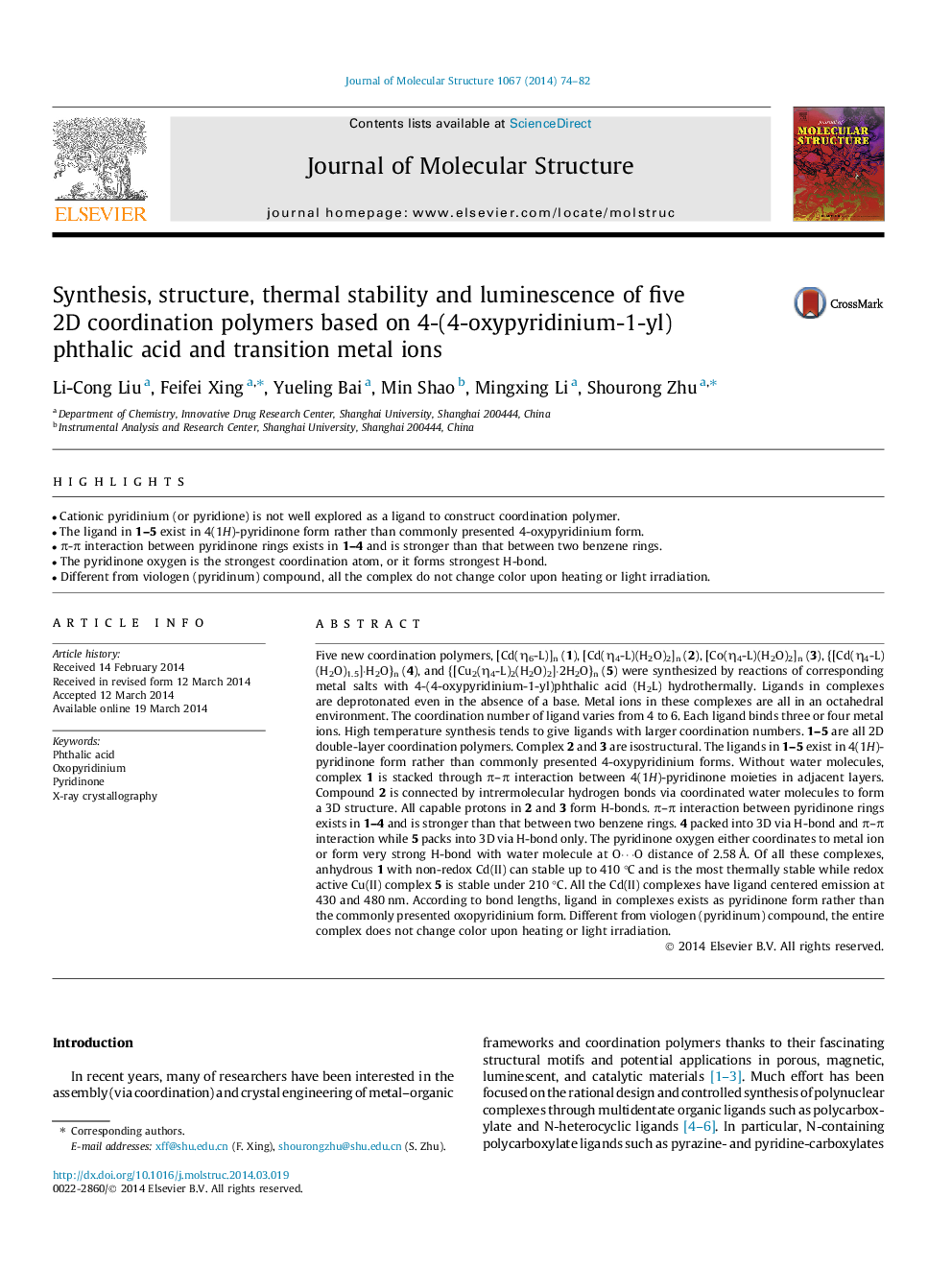| کد مقاله | کد نشریه | سال انتشار | مقاله انگلیسی | نسخه تمام متن |
|---|---|---|---|---|
| 1405204 | 1501750 | 2014 | 9 صفحه PDF | دانلود رایگان |

• Cationic pyridinium (or pyridione) is not well explored as a ligand to construct coordination polymer.
• The ligand in 1–5 exist in 4(1H)-pyridinone form rather than commonly presented 4-oxypyridinium form.
• π-π interaction between pyridinone rings exists in 1–4 and is stronger than that between two benzene rings.
• The pyridinone oxygen is the strongest coordination atom, or it forms strongest H-bond.
• Different from viologen (pyridinum) compound, all the complex do not change color upon heating or light irradiation.
Five new coordination polymers, [Cd(η6-L)]n (1), [Cd(η4-L)(H2O)2]n (2), [Co(η4-L)(H2O)2]n (3), {[Cd(η4-L)(H2O)1.5]·H2O}n (4), and {[Cu2(η4-L)2(H2O)2]·2H2O}n (5) were synthesized by reactions of corresponding metal salts with 4-(4-oxypyridinium-1-yl)phthalic acid (H2L) hydrothermally. Ligands in complexes are deprotonated even in the absence of a base. Metal ions in these complexes are all in an octahedral environment. The coordination number of ligand varies from 4 to 6. Each ligand binds three or four metal ions. High temperature synthesis tends to give ligands with larger coordination numbers. 1–5 are all 2D double-layer coordination polymers. Complex 2 and 3 are isostructural. The ligands in 1–5 exist in 4(1H)-pyridinone form rather than commonly presented 4-oxypyridinium forms. Without water molecules, complex 1 is stacked through π–π interaction between 4(1H)-pyridinone moieties in adjacent layers. Compound 2 is connected by intrermolecular hydrogen bonds via coordinated water molecules to form a 3D structure. All capable protons in 2 and 3 form H-bonds. π–π interaction between pyridinone rings exists in 1–4 and is stronger than that between two benzene rings. 4 packed into 3D via H-bond and π–π interaction while 5 packs into 3D via H-bond only. The pyridinone oxygen either coordinates to metal ion or form very strong H-bond with water molecule at O⋯O distance of 2.58 Å. Of all these complexes, anhydrous 1 with non-redox Cd(II) can stable up to 410 °C and is the most thermally stable while redox active Cu(II) complex 5 is stable under 210 °C. All the Cd(II) complexes have ligand centered emission at 430 and 480 nm. According to bond lengths, ligand in complexes exists as pyridinone form rather than the commonly presented oxopyridinium form. Different from viologen (pyridinum) compound, the entire complex does not change color upon heating or light irradiation.
Journal: Journal of Molecular Structure - Volume 1067, 5 June 2014, Pages 74–82